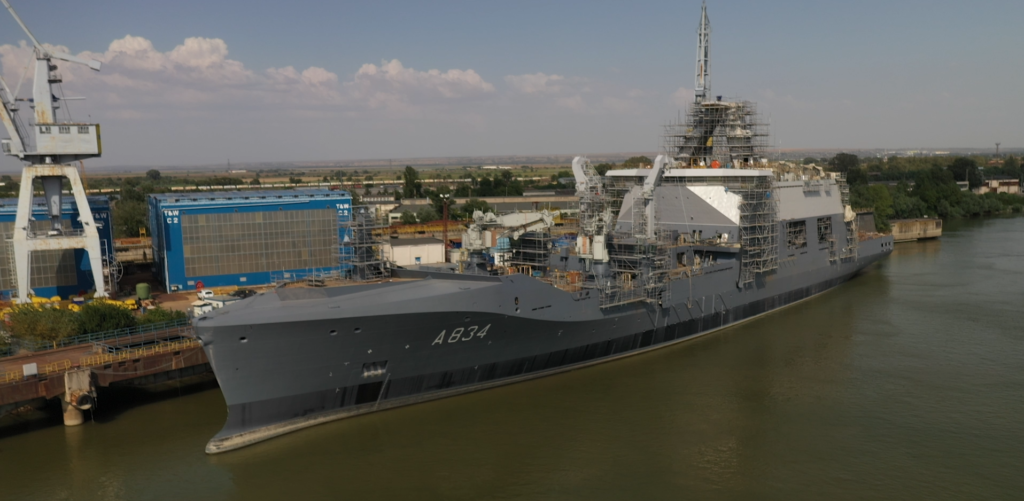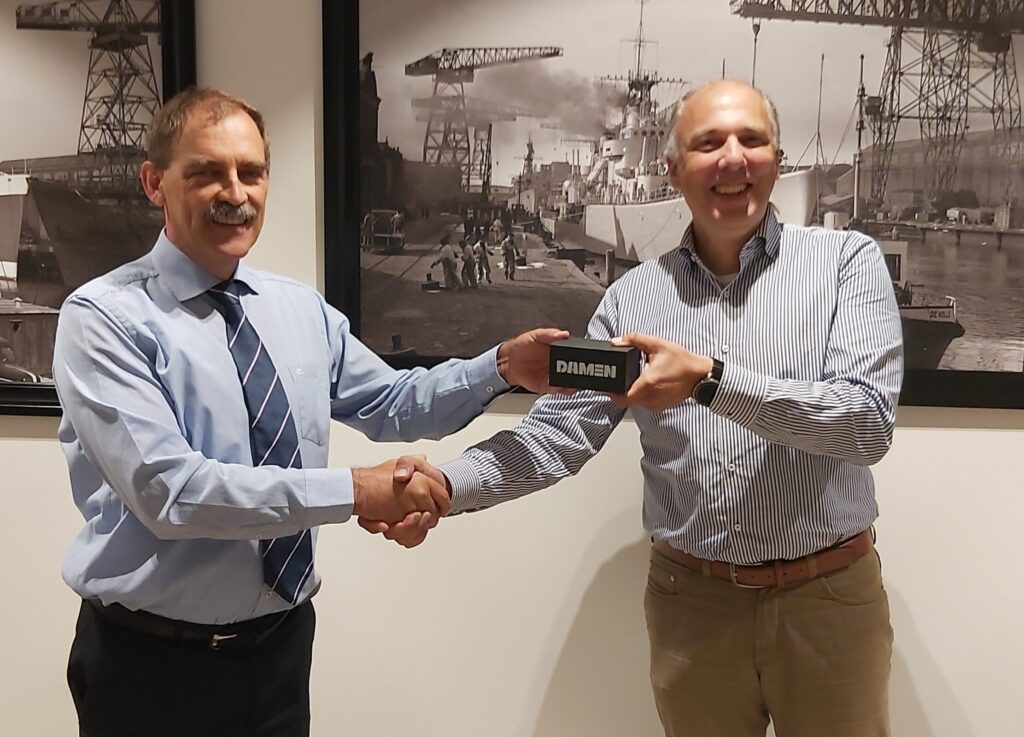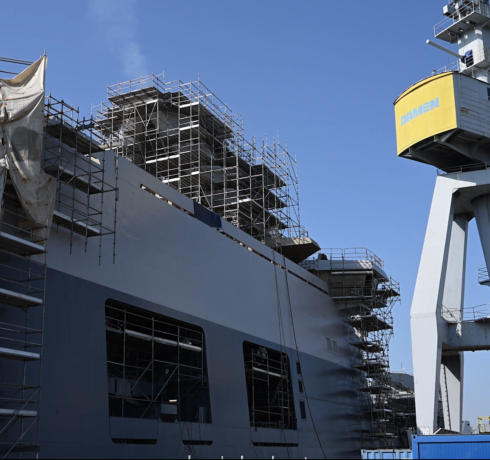During recent testing of the Wärtsilä diesel generators, smoke came out of the chimney of the Combat Support Ship for the first time. CSS Den Helder is at the finishing quay in Galați, Romania, and the first smoke was a memorable milestone for the project, says Project Director Arjan Risseeuw. “It is a wonderful moment because you really see and hear the ship come to life. It was very impressive.”
Due to a combination of the type of diesel generators and the exhaust gas cleaning system that has been installed, the exhaust fumes comply with IMO Tier 3 emission regulations. This ensures that the smoke is clean, but also that it is barely detectable, so one had to look closely.
 CSS Den Helder is at the finishing quay in Galați, Romania, and the first smoke was a memorable milestone for the project.
CSS Den Helder is at the finishing quay in Galați, Romania, and the first smoke was a memorable milestone for the project.
A whole process preceded the test, as multiple systems had to be first connected and commissioned. “It’s one of those moments you all work towards as a project. The starting air compressor has to be connected and commissioned, there has to be lubricating oil, fuel, ventilation, the exhaust pipes have to be complete, there has to be cooling water: there are a lot of steps that have to be taken before you can see the first smoke.”
Now that all four diesel generators have been tested and are operational, power can be generated. Since this power is not yet used to power the ship or run the propulsion engines and propeller shafts, it has to be dissipated. Large resistors, or “load banks”, have been rented for this purpose. During the load bank tests, the generators can be tested at various powers.
In late September/early October, the first Static Load Tests for the Replenishment at Sea (RAS) installation will also take place. Arjan: “During replenishment at sea, fuels and water go to other ships via hoses, but also fixed loads. The RAS installation must therefore be able to withstand considerable forces. In recent weeks, we have tested this by loading the installation from the quay.” He concludes, “These are busy, intensive months, but for now we are on track to go on sea trials in early 2024.”
 Damen Naval Project director Arjan Risseeuw hands over the VR module to Joost Meesters, CSS Project Manager at COMMIT.
Damen Naval Project director Arjan Risseeuw hands over the VR module to Joost Meesters, CSS Project Manager at COMMIT.
Recently, Damen Naval also delivered the VR module of the entire ship to COMMIT, which in turn handed it over to the Royal Netherlands Navy Command (CZSK). “The slogan for new crew members on board used to be ‘Know your ship within 24 hours’. Now we can change that slogan to: ‘Know your ship 24 hours before boarding’,” Arjan says.
The VR version will be used by the Naval training institute for training the new crew. This will allow them to find their way on board the CSS even before they see or visit the ship in real life. The technology can also be used to train maintenance engineers or surveillance.
Technical Specialist VR Björn Mes and his team had to stretch the limits of hardware and software at times to create the virtual version. “We have never put such a large and detailed ship in VR before. Even outside Damen Naval, this is a scale you don’t often see.” Björn concludes: “Making the CSS in VR was a team effort but Bas Lafeber and Niels Abrahamse from Damen Naval and Tom and Thomas from the Simulation Centre Maritime spent many hours ‘on board’. It was a challenging project, but the end result looks good.”

